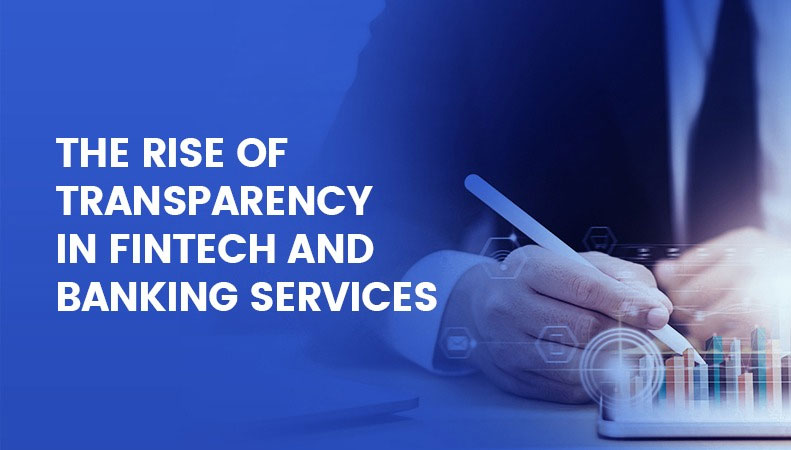
THE RISE OF TRANSPARENCY IN FINTECH AND BANKING SERVICES
16th June 2021
Academic theory suggests a connection between knowledge asymmetry and banking sector structure, and this dynamic in an open banking environment deserves more attention. Open banking, on the other hand, can reduce information symmetry by improving the processing and analysis of raw personal financial data, as well as consumer willingness to grant access to this enriched financial data to benefit from more cost-effective and tailored financial solutions. Open banking is a fascinating vision for the future of banking around the world, and it poses some interesting questions that will keep industry and academia busy for years!
Fintech (short for financial technology) is regarded as a recent phenomenon, but the use of technology to assist financial services is far from new. Financial services is an industry that invented credit cards in the 1950s, internet banking in the 1990s, and contactless payment technology after the millennium. Fintech's public profile, on the other hand, has exploded in the last three years. For example, in Malaysia, due to a push in digitization due to the pandemic, cross-border and digital payments have become the norm.
Fintech startups haven't acknowledged the extensive disruption of all financial markets so far. According to a McKinsey study of startup data, 62% of startups are focused on retail banking, while only 11% are centred on large corporate banking. Payments are the most common target for usurpation, and lending is the most lucrative field of banking in terms of revenue.
Change the Cost Culture of Cross-Subsidization
The yearly budgeting phase in banking is a focal point in terms of determining revenue goals as well as expenses that will be allocated to divisions. All must be shared, from the rent to the flowers in the reception room. While equitable cost accounting approaches make this process more straightforward, rising costs put more pressure on short-term goals like hitting yearly targets at the expense of long-term planning. Cost rises occur frequently—the cost of banking is projected to grow by 4% as a result of Brexit alone.
Cross-subsidization can also be seen in goods, with some seeing a higher return on investment than others for competitive purposes. Student bank accounts come with huge overdrafts and free concert tickets for a reason: banks want to draw new customers who will be buying houses with lucrative long-term mortgages ten years down the road.
Banks work in vertical silos, with each team performing separate tasks, and multiple teams involved if a deal involves multiple services. Each team needs its own "piece of the pie" because each has its cost structures and benefit goals. A 2017 leak of a Banco Santander study published by the Guardian shows this for money transfers, where three Santander teams together gained €585 million in annual revenue from the operation. As opposed to Transferwise's transparent and lower fees, there is a clear difference.
Banks have an advantage over fintech startups in that they have historical process experience and therefore know the keys to these rails. Improving them would provide banks with cost savings that can be passed on to customers in the form of lower prices. Fintech startups that use the service can pay transaction rentals if the service is better. Given that upstarts believe in “unbundling” the bank, it's fair to think that they'd be happy to rent a newer type of infrastructure as long as it's malleable, transparent, fast, and offers good value.
Transparency as Cocreated Value in Fintech Markets
In financial marketing literature, transparency is commonly regarded as a positive thing, a reliable way of making evident the dynamic, intangible features of financial products and enabling consumers to determine and compare price and fairness. Transparency has become a revered, unquestioned business concept for markets to achieve appropriate regulatory and public support for activity amidst successive controversies and crises, as well as industry innovation and transition.
Transparency is becoming increasingly important in response to Open Banking in the case of fintech's transparency initiative. To establish confidence with regulators and attract investors, partners, and suppliers, I place fintech actors as desiring transparency.
Transparency has become a symbol of cultural and moral authority for fintech players in the long aftermath of the 2008 financial crisis.
So, what part does marketing play in fostering transparency in the fintech sector? When it comes to countering publicity critiques, especially in commercial settings, accountability can only be achieved by exposure management, which allows organizations to ensure that their transparency efforts are in line with organizational imperatives and reputation statements.
In the digital era, visibility management increasingly means search visibility, which means making products, services, and ideas accessible through website navigation, search engine optimization, social media promotion, and hyperlinked content. Furthermore, the dominant logic of marketing in the twenty-first century is value co-creation between a corporation and its consumers.
This marketing viewpoint represents the global economy's rising service focus, which includes financial services and fintech. According to a value co-creation strategy, marketing's task is to find ways for companies and sectors to cocreate transparency with consumers and key stakeholders.
EVOLET is a digital wallet app for migrant workers.
Learn more at https://evolet.io/
